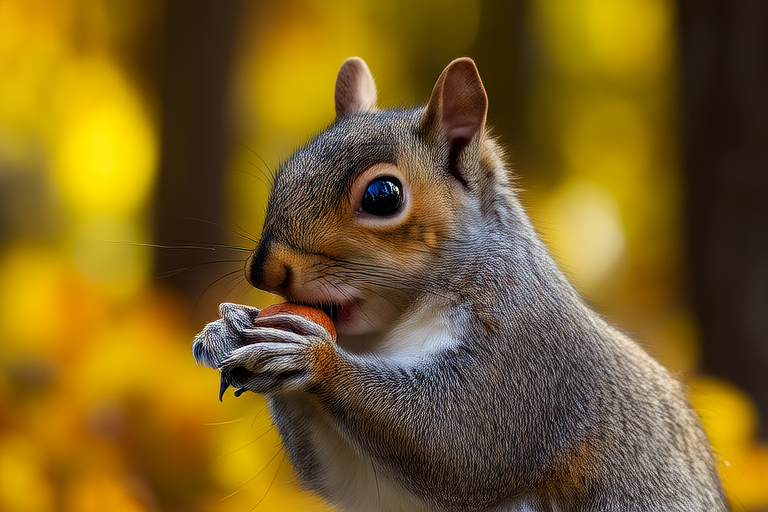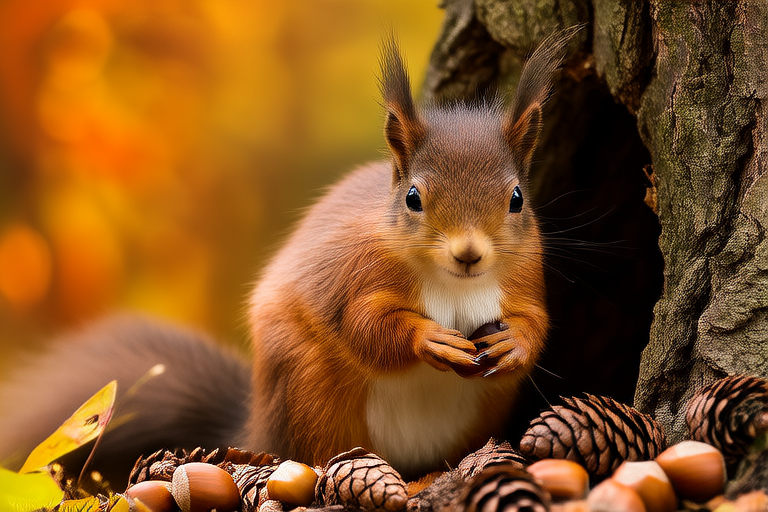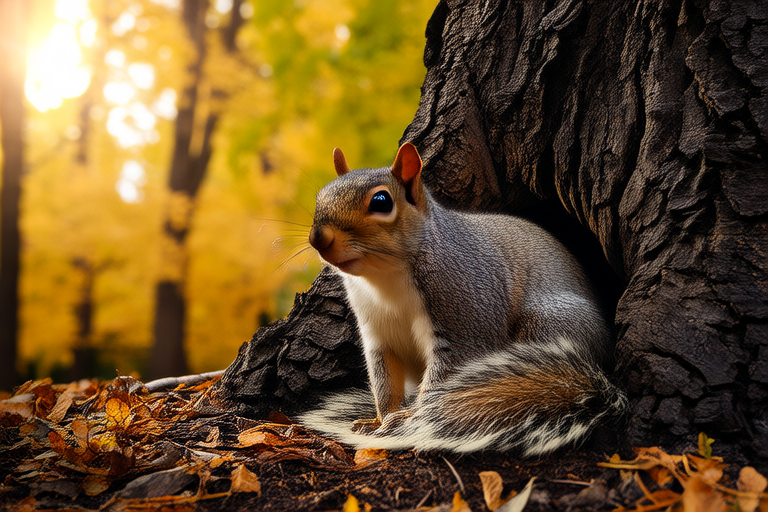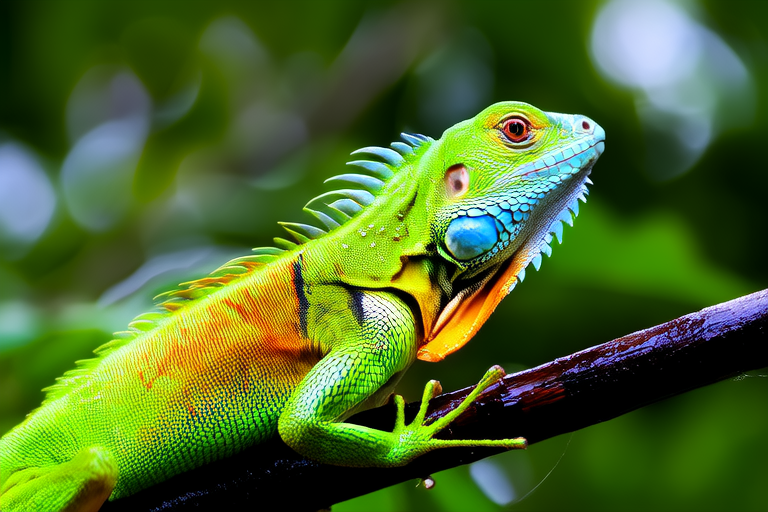
Meet Your Backyard Acrobats: Fascinating Facts About Squirrels
Welcome to the world of squirrels, those agile acrobats that grace our backyards with their playful antics and busy lives. These small mammals have captured the hearts of many with their endearing behavior and impressive survival skills. Let’s dive into the fascinating world of squirrels and uncover some intriguing details about these charming creatures.
Physical Characteristics
Squirrels come in various sizes, from the tiny ground squirrel to the larger red and gray squirrels. The most common backyard variety, the eastern gray squirrel, typically measures around 18 inches long, including its bushy tail. Their sleek, soft fur ranges in color from silver-gray to black, providing excellent camouflage against predators.
Their large, round eyes give them exceptional peripheral vision, allowing them to spot potential threats even when they’re focused on something else. The squirrel’s tail is more than just a fluffy appendage; it serves as a balance aid during leaps and chases. It also acts as a blanket in cold weather and a parasol in the rain.
One lesser-known fact is that squirrels have four front teeth that grow continuously throughout their lives. This ensures they can gnaw through tough shells and bark without wearing down their teeth. Despite this adaptation, squirrels still face challenges like dental issues if they don’t wear down their teeth properly.
Behavioral Traits
Squirrels are known for their playful and curious nature. They spend much of their day foraging for food, often burying nuts and seeds for later consumption. This behavior is crucial for their survival, especially during winter months when food sources become scarce.
Observing squirrels can be quite amusing. They frequently engage in what appears to be play fighting, chasing each other around trees and bushes. While this might look like fun, it actually serves a purpose. Play fighting helps young squirrels develop important survival skills such as agility and strength.
During mating season, male squirrels perform elaborate courtship dances to attract females. Once paired, the female builds a nest, or drey, where she will raise her young. A typical litter consists of two to six babies, known as kits.
Habitat Preferences
Squirrels thrive in diverse environments, from urban parks to rural woodlands. They prefer areas with plenty of trees, as these provide both shelter and food sources. In cities, squirrels have adapted well to human presence, finding refuge in parks, gardens, and even residential neighborhoods.
Despite their adaptability, squirrels require specific conditions to thrive. They need access to water, a variety of food sources, and safe places to rest and raise their young. Urban squirrels have learned to exploit human-made structures, using bird feeders, attics, and even chimneys as nesting sites.
One myth about squirrels is that they are primarily nocturnal. In reality, most squirrel species are diurnal, meaning they are active during the day. However, some ground squirrels may be more active at dawn and dusk, leading to the misconception.
Diet and Feeding Habits
Squirrels are omnivores, meaning they eat both plant and animal matter. Their diet primarily consists of nuts, seeds, fruits, and fungi. They also consume insects, eggs, and even small vertebrates when available. One of the most interesting aspects of their feeding habits is their ability to store food for future use.
During autumn, squirrels go on a feeding frenzy, gathering and burying thousands of nuts and seeds. This behavior is known as caching, and it’s essential for their survival. Despite burying so many items, studies show that squirrels only recover about half of their cached food. The rest becomes part of the forest’s nutrient cycle.
Some people mistakenly believe that squirrels hibernate during winter. In truth, squirrels remain active year-round, though they may reduce their activity levels during extreme cold spells. Instead of hibernating, they rely on stored food and thick coats to survive the colder months.
Communication Methods
Squirrels communicate through a variety of vocalizations and body language. They emit high-pitched chirps, barks, and screeches to alert others of danger or to express excitement. These sounds can vary in pitch and intensity, depending on the situation.
In addition to vocalizations, squirrels use their tails to signal distress or aggression. Fluffing up their tails can make them appear larger and more intimidating to potential threats. Tails also help squirrels maintain balance and regulate temperature.
Observing squirrels in action can provide valuable insights into their communication methods. For instance, when a squirrel spots a predator, it may emit a series of short, sharp chirps to warn others. This behavior demonstrates how squirrels work together to ensure the safety of their community.
Unique Adaptations for Survival
Squirrels possess several unique adaptations that enable them to thrive in various environments. Their keen sense of smell allows them to locate buried nuts and seeds, even under snow. Their sharp claws provide excellent grip on tree trunks and branches, facilitating quick escapes from predators.
Another remarkable adaptation is their ability to leap great distances. Squirrels can jump up to ten feet in a single bound, thanks to powerful hind legs and a flexible spine. This agility is crucial for navigating their arboreal habitats and evading predators.
Despite their speed and agility, squirrels still face numerous challenges in their environment. Predators such as birds of prey, snakes, and domestic cats pose significant threats. To mitigate these risks, squirrels have developed a range of defensive strategies, including hiding, running, and climbing.
Interesting Statistics and Lesser-Known Facts
Did you know that squirrels can run at speeds of up to 20 miles per hour? This impressive speed helps them evade predators and reach food sources quickly. Another fascinating statistic is that squirrels can jump up to twenty times their body length. This remarkable feat is made possible by their powerful hind legs and flexible spine.
While most people associate squirrels with nuts, did you know that they also play a crucial role in forest ecosystems? By burying and forgetting about some of the nuts they cache, squirrels inadvertently help to plant new trees. This process, known as seed dispersal, is vital for maintaining healthy forests.
One lesser-known fact is that squirrels can recognize individual humans. Studies have shown that squirrels can distinguish between familiar and unfamiliar faces, which aids in identifying potential threats or sources of food. This ability underscores the intelligence and adaptability of these remarkable animals.
Conclusion
Squirrels are truly remarkable creatures, combining playful behavior with impressive survival skills. From their physical adaptations to their complex social interactions, there’s always something new to learn about these backyard acrobats. Whether you’re a seasoned wildlife enthusiast or simply enjoy watching them in your garden, squirrels offer endless fascination and entertainment.
Next time you see a squirrel dart across your yard or scamper up a tree, take a moment to appreciate the complexity and beauty of these small but mighty animals. Their presence adds joy and wonder to our daily lives, reminding us of the intricate web of life that exists all around us.





